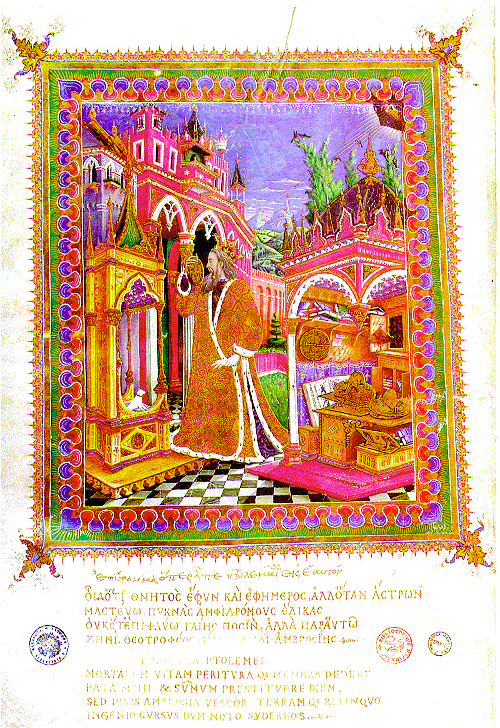
Claudius Ptolemy lived in Alexandria, in Egypt, in the middle of the second century CE. He was descended from an Egyptian family and associated with the renowned library situated in the city. He is celebrated for his great work of astronomy, known today as the Almagest. In fact, the very title is testament to its status and its tortuous history. Almagest is a transliteration of the name given to the work when it was rendered into Arabic in the early middle ages. The Islamic scholars, aware of what they possessed, called it The greatest work, and the name stuck when it was later retranslated into Latin. Ptolemy himself, however, had used the more modest Greek title, Syntaxis - Treatise (or System) of mathematics.
The Almagest provided what was as far as we know the first complete guide to calculating the planetary motions. To achieve this, Ptolemy adopted a number of conceptually simple but mathematically complex procedures. He reasoned that a planet must move on a combination of circular motions, which must be uniform - but that in certain circumstances the circles need not center on the Earth, and their motions need not be uniform about either the Earth or their own centers. The result was a series of discrete mathematical models, one for each planet. Ptolemy's astronomy was therefore simple and elegant in the theoretical building-blocks it used, but disjointed in the model it proposed for the cosmos as a whole. And it was mathematically very demanding: the simulation of Ptolemaic theorizing integrated into Microcosmos necessarily simplifies its processes.
Ptolemy also produced other works. Most important of them was the Geography, a survey of the known world that was to be recovered in the Renaissance and inspire a scholarly tradition of its own. In addition, he wrote the Tetrabiblos, a work on astrology, or, more properly, on celestial causation, that eschewed the mathematical approach of the Almagest for a natural philosopher's attention to substance and process. This emphasis he also displayed in his Planetary Hypotheses, which attempted to provide a physical account capable of accommodating his mathematical arguments in the Almagest. Ptolemy also produced highly successful work on light and vision that would survive in incomplete form as his Optics. And he completed a work on music theory, the Harmonics, that would again be recovered and prove influential in the Renaissance.
 |
This image from a fifteenth-century translation of Ptolemy's Geography confuses the astronomer with the Pharaoh of the same name, to whom he was in fact not related. Note the profusion of books and instruments, including at least one astrolabe, to be seen in his chamber. From A. Turner, Early Scientific Instruments (1987). |